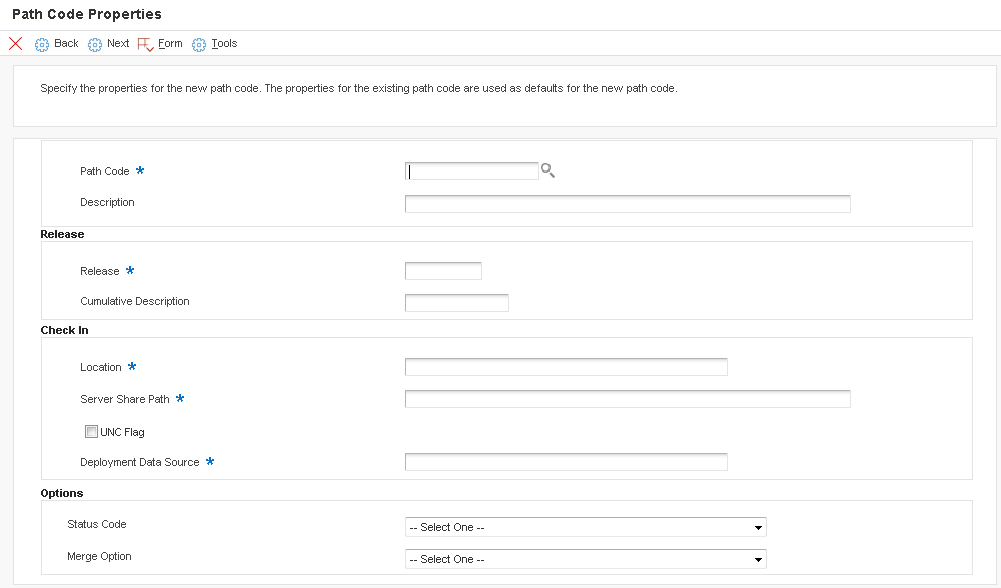Path Code Properties
The Path Code Properties form is used to specify the properties for the new path code. The properties for the existing path code are used as defaults for the new path code.
Access the Path Code Properties form.

- Path Code
Enter the path code, which is a pointer to a set of system objects and is used to keep track of sets of objects and their locations.
- Description
Enter a user defined name or remark.
- Release
Enter the release number as defined in the Release Master. It must match the environment's release.
- Cumulative Description
Use to further identify the release level of the path code; it is only used by OMW for SAR integration
- Location
Enter the location or machine key of the machine (server or workstation) on the network.
- Server Share Path
Use this field to indicate the shared directory for this path code. The objects that are stored on a file server will be found in this path.
- UNC Flag
Determines how to create the server path. Valid options are:
Checked
Creates the path using relative paths. Enter a double slash (\\), rather than the specific followed by a single slash (\).
Unchecked
Creates the path using the actual drive letter.
- Deployment Data Source
Enter the location (data source) of the Central Object Specifications data source that corresponds to the path code. For example, if the environment has a PDxxxx path code, where xxxx is the current system release level, a valid data source for that path code would be Central Objects - PDxxxx, where xxxx is the current release level.
- Status Code
Enter a code to determine the status of the software in the development cycle.
- Merge Option
Select this option to determine whether a customer's object will be merged in with the EnterpriseOne object. The merge option can be set at the path code level so that all objects checked into that path will carry the same merge option as the path code.